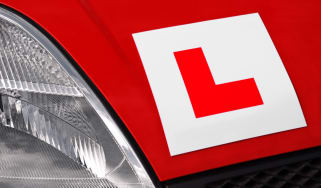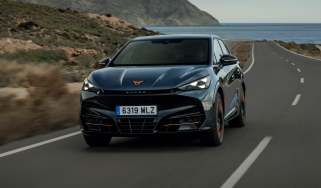Should you learn to drive a manual or automatic? There’s definitely a trend!
EV sales are increasing, but does it make sense for learners to take an ‘auto only’ driving test?

WIth the new Zero Emission Vehicle Mandate setting the UK on a pathway to 2035 when new petrol and diesel (ICE) cars will be banned from sale, choosing to take a driving test in an automatic car is already proving more popular.
According to intensive driving course provider PassMeFast, demand for driving lessons in automatic cars has risen significantly from pre-pandemic levels. Company spokesperson Louise Bruchez says it’s likely the numbers wishing to learn to drive an auto will continue to increase as we head towards the ICE ban.
“PassMeFast internal data has found that the growing demand for electric and hybrid vehicles has impacted the desire for driving lessons and courses to be carried out in an automatic car. The demand, in fact, increased 89% from 2019 to 2023,” she says.
“It’s likely that this trend will continue to grow as we head towards 2035, when the government will ban petrol and diesel vehicle sales, which will require more people to opt for more sustainable forms of transport. As we approach this date, it’s likely that we will see more instructors offering driving courses in electric and automatic vehicles.”
But is taking an auto-only driving test the best option for young drivers today? Not necessarily, and not least for the very practical reason that waiting lists for lessons in the still relatively small number of automatic driving school cars can be much longer than waiting lists for drivers seeking manual lessons.
“Across the UK, driving instructors are reporting waiting lists, due to the backlog of learners from the pandemic. These backlogs are disrupting the schedules of many test centres across the country,” says Buchez. “The result of this means it has become more difficult for the next generation of drivers to find instructors.” According to Buchez, that means for now, and for the next generation of new learners, it’s likely to be a quicker and simpler process to learn in a manual car.
Buchez points out that it’s also important to remember the value of having a full manual licence for drivers who may one day wish to use a courtesy or hire car. This is especially true if travelling abroad in countries with slower uptake of electric cars, while there are likely to be millions of manual cars here on UK roads for decades after the ban on selling brand new ICE models is implemented.
Contrary to popular belief, it may not be easier to learn to drive an automatic either. Figures from the DVLA have, for years, shown a much lower pass rate for drivers taking auto-only tests.
As a rule of thumb just under half of candidates pass the manual test, while around 20 per cent fewer pass the auto test - although this disparity may be explained by unrecorded factors, such as a higher proportion of anxious drivers choosing a perceived easier option. It’s also the case that far more automatic tests are taken in urban areas than rural ones, and urban test routes are typically more challenging which affects the overall pass rate.
In 2021, the Driver and Vehicle Standards Agency (DVSA), which manages the driving test, told Auto Express that it had begun to look at what changes need to be made to reflect the differences between electric and hybrid cars and their petrol and diesel counterparts. Gordon Witherspoon, the DVSA’s deputy chief driving examiner, said his organisation constantly reviews the test “to take account of changes in technology, driving habits, regulations and highway infrastructure”.
Want the latest car news in your inbox? Sign up to the free Auto Express email newsletter...
Find a car with the experts









